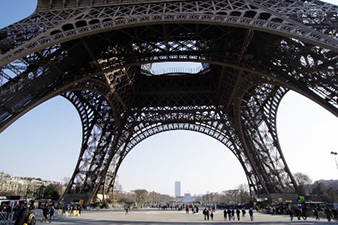The Eiffel Tower: A Fascinating Case of Biomimicry
At the end of every Strong Bones class, we always take a few moments to contemplate things we are grateful for in our lives.
In appreciation of the human body which not only transports us through life but also allows us to, more or less, do the things we enjoy, I am dedicating this month’s blog to our amazing thigh bones. I know I’m grateful for mine!
Hermann von Meyer, an anatomist in the 1850’s, had been conducting research on the femur (thigh bone) which was of interest to him because of the odd angle it forms near the hip joint. How could it be that such an off-center configuration is able to bear the weight of the human body?
Enter Karl Cullman, a Swiss engineer, who studied Von Meyer’s work. Cullman generated mathematical models of the femur design and realized that the crisscrossed structure of the bone cells (trabeculae) of the upper femur were located at precisely the correct angles to absorb maximum force.
Jumping ahead to the late 1800’s, Gustave Eiffel, a French structural designer, was given the task of designing a structure for the World Fair in 1889 that was to be held in Paris. In a marvelous example of biomimetics, he used the work of Von Meyer and Cullman to design his iconic tower.
The lattice of studs and braces that support the curved structure of the Eiffel tower are similar to the way the trabeculae efficiently support the curves at the top of our femur bones.
Amazing indeed.




